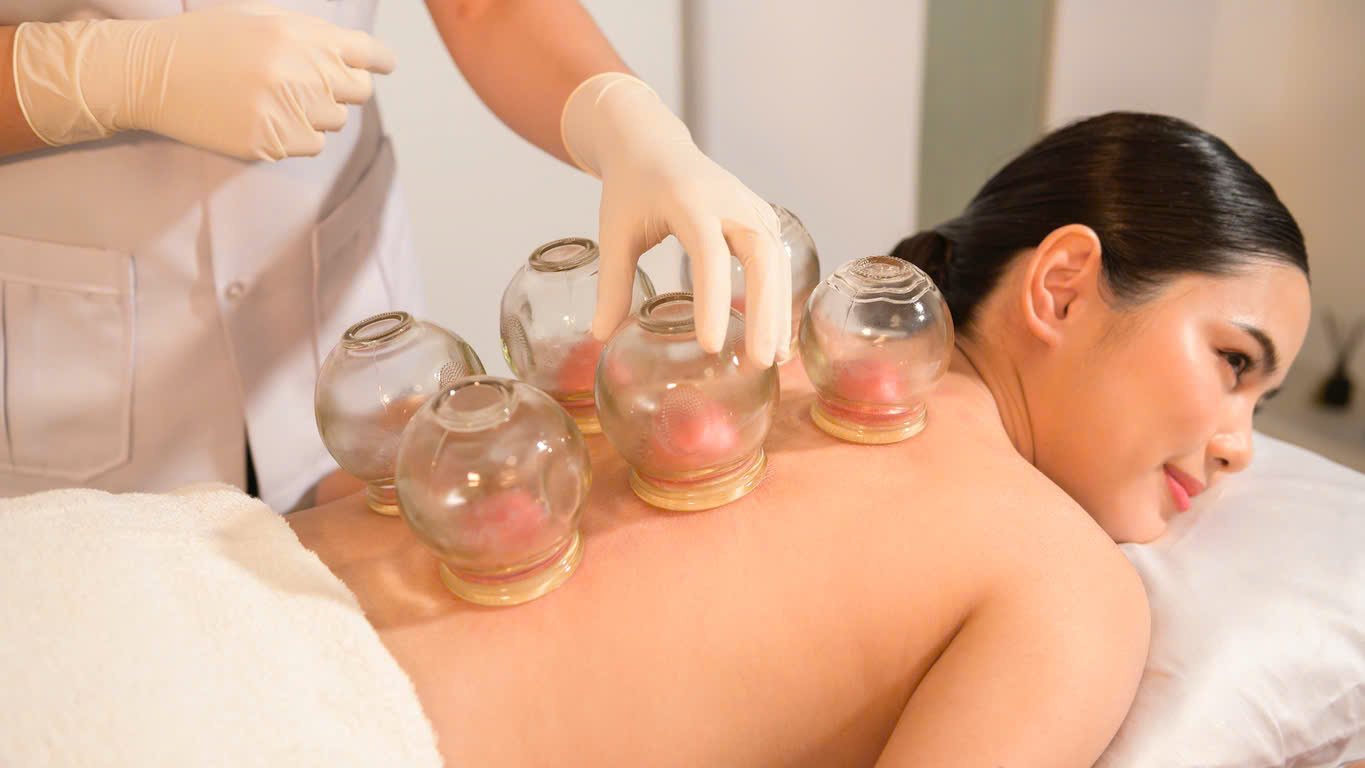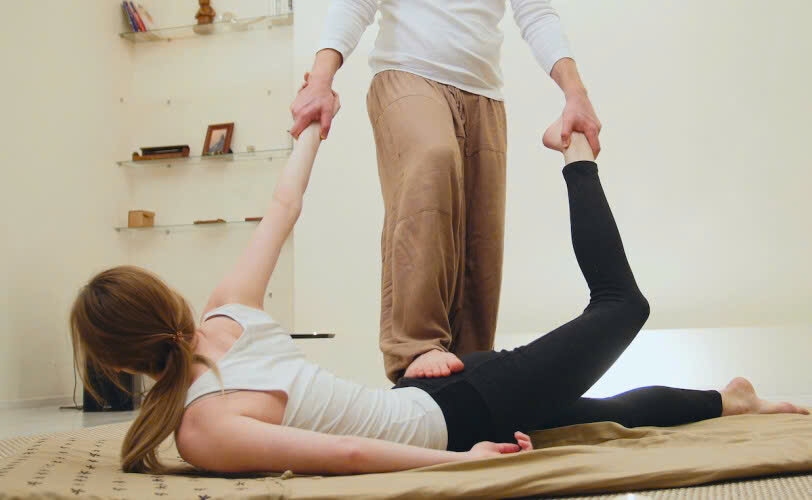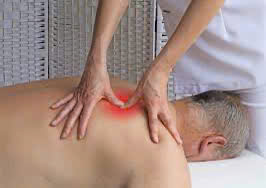Physical Therapy & Massage Therapy: What You Need to Know
When it comes to managing pain, improving mobility, or enhancing overall wellness, physical therapy & massage therapy are two popular approaches that often intersect but serve distinct purposes. Both modalities focus on healing and maintaining the body’s health, yet they employ different methods, philosophies, and outcomes. Understanding what you should to know about these therapies is essential for making informed decisions about your health. This comprehensive guide will explore the difference between physical therapy & massage therapy, their benefits, and how they can work together to optimize recovery and well-being.

Physical Therapy & Massage Therapy
Physical therapy & massage therapy are therapeutic practices aimed at promoting healing, reducing pain, and improving function. While they share common goals, each has unique techniques and targeted areas of treatment.
Physical therapy involves a structured rehabilitation process guided by licensed physical therapists who diagnose and treat musculoskeletal, neurological, and cardiovascular conditions through exercises, manual therapy, and modalities like ultrasound or electrical stimulation.
Massage therapy typically involves manipulating soft tissues—muscles, fascia, tendons—to relax, reduce tension, improve circulation, and alleviate discomfort. It is often delivered by trained massage therapists focused on relaxation or pain relief.
Both therapies emphasize patient-centered care but differ considerably in scope, approach, and objectives. Some patients may benefit from integrating both modalities into their treatment plan, especially when seeking holistic recovery or preventive care.
In this section, we will explore foundational elements of each therapy to understand their core principles, typical practitioners, and common contexts where they are applied.
Origins and Philosophies of Physical Therapy & Massage Therapy
Physical therapy has roots in rehabilitative sciences that date back centuries, expanding significantly with advances in medicine and biomechanics during the 20th century. Its philosophy centers on restoring movement, function, and independence through evidence-based interventions. The primary aim is to treat injury or impairment and prevent future disability.
Conversely, massage therapy traces its origins to ancient civilizations such as China, Egypt, Greece, and India, where healing practices involved manual manipulation of tissues. Its philosophy emphasizes relaxation, stress reduction, and holistic health, considering emotional and physical well-being as interconnected.
Despite their different origins, both therapies recognize the importance of manual contact and tissue manipulation in healing processes. They often complement each other, especially in multidisciplinary rehabilitation programs.
Types of Practitioners and Settings of Physical Therapy & Massage Therapy
Physical therapists (also known as physiotherapists) are licensed healthcare professionals requiring extensive education, including a degree in physical therapy and clinical training. They work in diverse settings such as hospitals, outpatient clinics, sports facilities, and private practices.
Massage therapists usually attend specialized training programs, which vary by region, and obtain certification or licensure depending on jurisdiction. They operate in spas, wellness centers, chiropractic offices, or independent practices.
Understanding the practitioner’s background helps patients select appropriate care based on their specific needs—whether focusing on medical rehabilitation or relaxation and stress relief.
Typical Conditions Addressed of Physical Therapy & Massage Therapy
Physical therapy manages acute injuries like fractures, sprains, post-surgical recovery, chronic conditions such as arthritis, neurological disorders including stroke or Parkinson’s disease, and sports injuries. It emphasizes restoring the body’s functional capacity through tailored exercises and manual techniques.
Massage therapy aims to relieve muscle tension, improve circulation, reduce anxiety, and enhance overall relaxation. Common issues include muscle soreness, stress-related tension, headaches, and minor soft tissue injuries.
By recognizing these distinctions, individuals can better navigate their options and choose therapies aligned with their health goals.

Physical Therapy & Massage Therapy What You Should To Know
Knowing what to expect from physical therapy & massage therapy helps set realistic goals and enhances treatment effectiveness. It is important to understand the scope, techniques, and expected outcomes of each modality.
What you should to know includes understanding how both therapies are personalized, the typical duration of treatments, and considerations for choosing one over the other or combining them.
This section aims to demystify the practical aspects of each therapy, offering insights into preparation, session structure, and potential integration.
Personalized Treatment Plans of Physical Therapy & Massage Therapy
Both therapies prioritize individualized care plans tailored to specific conditions, lifestyle factors, and personal preferences.
Physical therapy programs are often comprehensive, involving initial assessments, goal setting, and progression through exercises, manual interventions, and educational components. For example, a patient recovering from knee surgery might follow a structured protocol emphasizing strength, flexibility, and gait training.
Massage therapy sessions are typically shorter and focus on soft tissue manipulation to achieve immediate relief or relaxation. Therapists assess muscle tension patterns and customize techniques such as Swedish massage, deep tissue, or trigger point therapy accordingly.
Being aware of this personalization enables patients to actively participate in their recovery and communicate effectively with practitioners.
Session Expectations and Preparation of Physical Therapy & Massage Therapy
In physical therapy, patients should anticipate a combination of hands-on manual therapy, guided exercises, and home programs. Sessions often involve active participation, with therapists instructing patients on movements to promote healing and prevent recurrence.
Massage therapy sessions generally last from 30 to 90 minutes, during which the therapist applies various massage techniques. Patients are encouraged to communicate comfort levels and specific discomforts to maximize benefits.
Preparation varies; for physical therapy, wearing comfortable clothing and bringing relevant medical history facilitates effective treatment. For massage therapy, arriving well-hydrated and avoiding heavy meals beforehand can improve relaxation and outcomes.
Duration and Frequency of Treatments of Physical Therapy & Massage Therapy
The frequency and length of treatments depend on individual needs, severity of conditions, and therapeutic goals.
Physical therapy may require multiple sessions over weeks or months, particularly for complex conditions or post-surgical rehab.
Massage therapy is often used as a periodic maintenance or stress-relief tool, with sessions scheduled weekly or bi-weekly for ongoing benefits.
A clear understanding of the expected treatment timeline helps manage expectations and fosters commitment to the process.
Cost and Insurance Coverage
Coverage for physical therapy and massage therapy varies widely. Most insurance plans recognize physical therapy as medically necessary and provide coverage, sometimes with co-pays or limits.
Massage therapy is more often considered complementary or alternative medicine, with many plans offering limited reimbursement unless prescribed for medical conditions.
Patients should verify coverage details beforehand, consider out-of-pocket expenses, and explore bundled packages or discounts offered by providers.

What Is the Difference Between Physical Therapy & Massage Therapy
Understanding what is the difference between physical therapy & massage therapy is crucial for selecting the most suitable intervention for your health concerns.
While both involve manual techniques, their methodologies, goals, and professional scope diverge significantly.
This section explores these differences in detail to clarify their unique roles and how they complement each other.
Methods and Techniques Employed
Physical therapy incorporates a wide range of techniques, including manual therapy (joint mobilizations, soft tissue manipulation), therapeutic exercises, modalities like ultrasound, TENS (transcutaneous electrical nerve stimulation), and education on posture and biomechanics.
Massage therapy primarily involves manual manipulation of soft tissues through strokes, kneading, pressure, and stretching. Techniques vary from gentle Swedish massage to more intense deep tissue work, targeting muscle knots, adhesions, and promoting circulation.
Understanding these methods helps patients decide which approach aligns with their needs—whether focusing on structural correction, pain relief, or relaxation.
Goals and Outcomes
Physical therapy emphasizes restoring function, improving strength, mobility, and managing specific medical conditions. Outcomes are measurable improvements in range of motion, strength, and activity capability.
Massage therapy aims for immediate symptom relief, relaxation, and emotional well-being. Benefits include reduced muscle tension, decreased stress hormones, and improved mood, often resulting in subjective feelings of well-being.
Although overlapping in pain relief, the longer-term functional goals distinguish physical therapy from massage therapy.
Certification, Education, and Scope of Practice
Physical therapists undergo rigorous academic training, usually a doctoral degree, supervised clinical practice, and licensure exams. Their scope includes diagnosing movement disorders, developing comprehensive treatment plans, and performing specialized manual therapy.
Massage therapists typically complete certification programs ranging from several months to a year, with varying educational standards depending on jurisdiction. Their scope focuses on soft tissue manipulation and related techniques.
Recognizing these distinctions ensures patients seek appropriately qualified practitioners for their specific needs.
Cost, Accessibility, and Suitability
Cost and accessibility influence choice, especially considering insurance reimbursements and geographic availability.
Physical therapy tends to be more costly but is often covered by insurance for medically necessary conditions.
Massage therapy is generally less expensive but may require out-of-pocket payment, especially when used for wellness rather than medical reasons.
Suitability depends on the condition: structural issues and impairments often warrant physical therapy, while stress or muscle tension may be better addressed with massage.

Benefits of Physical Therapy & Massage Therapy
Both physical therapy & massage therapy offer a spectrum of benefits that extend beyond mere symptom alleviation. When used appropriately, they can significantly impact overall health, recovery speed, and quality of life.
Understanding benefits of physical therapy & massage therapy helps individuals make informed choices aligned with their health goals.
This section delves into the advantages of each modality, highlighting both immediate effects and long-term gains.
Physical Therapy Benefits
Restoration of Function and Mobility
One of the primary benefits of physical therapy is restoring lost function due to injury, illness, or surgery. Through targeted exercises and manual techniques, patients regain strength, flexibility, and coordination. For instance, after joint replacement surgery, physical therapy accelerates the return to normal movement.
Pain Reduction and Management
Physical therapists utilize manual therapy and modalities to reduce inflammation, stiffness, and pain. Techniques like soft tissue mobilization help break down adhesions and improve tissue health, providing relief without medication.
Prevention of Future Injuries
An often-overlooked benefit is injury prevention. Physical therapists educate patients about proper mechanics, ergonomics, and strengthening routines that reduce risk. Athletes and workers alike benefit from customized programs to avoid recurrence.
Chronic Disease Management
Conditions such as arthritis, osteoporosis, cardiovascular diseases, or neurological disorders can be effectively managed with physical therapy strategies that improve quality of life and maintain independence.
Massage Therapy Benefits
Immediate Muscle Relaxation
Massage provides swift relief from muscle tension, stiffness, and soreness. This immediate effect makes it ideal for athletes pre- or post-activity, or anyone experiencing tight muscles.
Stress Reduction and Emotional Well-being
Beyond physical benefits, massage stimulates the release of endorphins and serotonin, reducing stress hormones like cortisol. Many individuals find massage an excellent tool for mental health and relaxation.
Improved Circulation and Lymphatic Flow
Manipulating soft tissues promotes blood flow, oxygen delivery, and lymphatic drainage, which aids healing, detoxification, and immune function.
Enhanced Sleep Quality
Regular massage therapy correlates with improved sleep patterns, particularly for those suffering from stress or chronic pain. Relaxed muscles and reduced anxiety contribute to better rest.
Combined Benefits for Holistic Health
Integrating physical therapy and massage therapy can magnify benefits, addressing both structural issues and emotional health comprehensively. This synergy not only accelerates recovery but also fosters sustainable wellness habits.
Long-Term Impact
Consistent application of either therapy encourages healthier movement patterns, reduces dependency on medications, and cultivates a proactive attitude toward physical health.
How Physical Therapy & Massage Therapy Work Together
How physical therapy & massage therapy work together is a vital aspect of holistic health management. When integrated properly, these modalities complement each other’s strengths, leading to enhanced outcomes.
The collaboration involves strategic planning, timing, and understanding the roles each therapy plays within a broader treatment strategy.
In this section, we’ll explore the ways these therapies can be combined, the benefits of their synergy, and practical examples of integrated treatment plans.
Complementary Roles and Synergy
Physical therapy and massage therapy serve different but overlapping functions—rehabilitation versus relaxation, structural correction versus soft tissue release. Combining them leverages their respective strengths to accelerate healing.
For example, massage can prepare muscles for physical therapy by reducing tension, making exercises more effective and comfortable. Conversely, after physical therapy sessions, massage can help maintain tissue pliability and reduce delayed soreness.
This synergy creates a feedback loop, where each modality enhances the other’s effectiveness, leading to better patient engagement and faster recovery.
Practical Integration Strategies
Effective integration requires communication among healthcare providers and patients to tailor treatment sequences.
- Pre-treatment massage: Can loosen tight muscles before physical therapy, increasing range of motion and reducing pain.
- Post-treatment massage: Helps relax muscles after exercises, preventing soreness and promoting circulation.
- Concurrent therapy sessions: Some clinics offer combined treatments, where therapists coordinate interventions within the same visit.
- Home programs: Educating patients on self-massage techniques complements regular physical therapy.
A personalized approach ensures the interventions address both symptoms and underlying causes, leading to more sustainable health improvements.
Case Studies and Examples
- Sports injury rehabilitation: An athlete recovering from hamstring strain might receive physical therapy focused on strengthening and mobilization, supplemented by massage sessions targeting scar tissue and tension release.
- Chronic back pain: A patient with chronic lumbar pain benefits from physical therapy exercises combined with massage techniques that reduce muscular hypertonicity.
- Post-surgical recovery: Post-operative patients often find relief through massage that decreases swelling and improves tissue elasticity, facilitating physical therapy progress.
These examples illustrate how the integration of physical therapy & massage therapy can create comprehensive, patient-centered treatment plans that optimize outcomes.
Challenges and Considerations
While combining therapies offers numerous benefits, it also poses challenges such as scheduling logistics, ensuring practitioner coordination, and managing costs.
Patients should seek practitioners experienced in integrative approaches and communicate openly about their goals and comfort levels.https://jobedubaispa.com/wood-therapy/
Conclusion
Understanding what you should to know about physical therapy & massage therapy reveals that both modalities are powerful tools in promoting health, healing, and well-being. While what is the difference between physical therapy & massage therapy lies mainly in their methods, scope, and objectives, their combined application can lead to superior results. Recognizing the benefits of physical therapy & massage therapy empowers patients to make informed decisions, whether seeking injury rehabilitation, pain relief, stress reduction, or general wellness. Ultimately, how physical therapy & massage therapy work together exemplifies a holistic approach—integrating structural, functional, and emotional care to support a healthier, more resilient body. Embracing both therapies in a coordinated manner can unlock full potential for recovery and lifelong health.https://www.instagram.com/spa.jobe/
